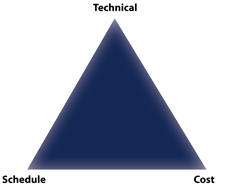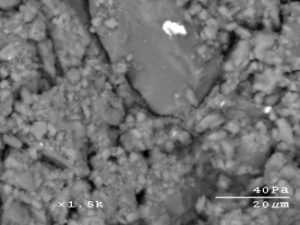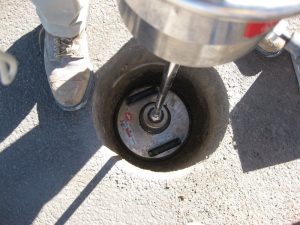Project Details
Second Strategic Highway Research Program (SHRP2)
Researchers
Peter Savolainen
About the research
Iowa State University will play a leading role in Tasks 1 through 3 and a supporting role to Wayne State University in Tasks 4 and 5:
Task 1: Collect and analyze aggregate-level data
Task 2: Identify candidate events for detailed analysis
Task 3: Review and collect time-series and video data
Task 4: Analyze driver behavioral data
Task 5: Prepare proof-of-concept report and Phase II work plan
Project Details
Federal Highway Administration
National Highway Institute
Second Strategic Highway Research Program (SHRP2)
Researchers
About the research
The overall objective of the Second Strategic Highway Research Program (SHRP2) project R06E Real-Time Smoothness Measurements on Portland Cement Concrete (PCC) Pavements during Construction was to enable real-time control of concrete pavement smoothness during construction by evaluating and demonstrating promising technologies, and the development of both model specifications and construction guidance that are capable of working with the identified technology in such a way as to further the objective of rapid implementation by state highway agencies.
Seven potential real-time smoothness measurement devices were identified and studied as part of the project. Two of the devices were found to warrant subsequent evaluation and demonstration as part of Phase Ill of the project: These included the GOMACO Smoothness Indicator (GSI) and the Ames Engineering Real-Time Profiler (RTP). The GOMACO device was piloted and evaluated during concrete paving projects in Arkansas and Michigan, and the Ames device was piloted in Michigan, New York, and Texas.
During the project, it was noted that there was consensus among contractors that the real-time smoothness measuring technology represents a valuable process control tool in that the ability to have real-time feedback from intentional process changes has the greatest potential to make lasting improvements in the smoothness of concrete pavements. While the current state of the practice is to cautiously make an equipment/process change and wait approximately 24 hours for feedback when the hardened pavement can be profiled, real-time smoothness measuring devices allow the contractors to make adjustments to their concrete equipment and/or process while the concrete is still wet, minimizing more costly corrections later.
The objectives of this Task Order are to provide technology deployment support as follows: (1) equipment loan program; (2) conduct showcases; (3) conduct workshops; (4) documentation of results/case studies; (5) specification refinement; and (6) marketing and outreach. These objectives seek to ensure routine use of the R06E product technology by agencies and contractors that routinely construct PCC projects.
For more information, read the “Proven technologies to identify surface irregularities that can impact concrete pavement smoothness, and provide opportunity for corrections in real time,” article on FHWA’s website.
Related Resources
Below is a playlist of all CP Tech Center videos on real-time smoothness (RTS):
Project Details
17-627
08/01/17
02/03/20
Iowa Department of Transportation
Second Strategic Highway Research Program (SHRP2)
Researchers
Katelyn Freeseman
Yuxiang Tan
About the research
To improve long-term bridge performance through better design and maintenance practices, as well as to promote service life design (SLD) concepts, the Iowa Department of Transportation (DOT) has sought to implement SLD recommendations from two projects conducted under the Second Strategic Highway Research Program’s (SHRP2’s) Service Life Design for Bridges (R19A) in future bridge preservation practice.
The aim of the present study was to evaluate the bond strength and chloride resistance of thin epoxy overlays and compare the results with those obtained from low-slump dense concrete (LSDC) overlays. The following specific objectives were proposed: evaluate the initial and long-term bond strength of overlays, assess the chloride resistance of overlays, and identify the factors that affect the initial performance of overlays.
To fulfill these objectives, six existing bridges were chosen for installation of the two overlay types. Field inspections were performed on the selected bridges to document substrate surface conditions, substrate cores were extracted and tested using both ASTM C642 and ASTM C666 to evaluate the overlays’ porosity and durability to cyclic freezing conditions, on-site pull-off tests (ASTM C1583) were conducted to assess the initial bond strength of the overlays, laboratory pull-off tests (ASTM C1583) were conducted under cyclic freezing conditions to evaluate long-term bond strength, and salt ponding tests (AASHTO T 259) were performed to assess chloride resistance.
The results from these testing efforts indicated that the initial bond strength of both overlays are good; the long-term bond strength of thin epoxy overlays decreased sharply after 300 freeze-thaw cycles, whereas the bond performance of the LSDC overlay remained unchanged; the chloride resistance of the epoxy overlays is much better than that of the LSDC overlays; and the percentage of air voids in the substrate concrete was found to have an effect on the initial performance of the overlays.
Researchers
About the research
For this project, Iowa State University’s Center for Transportation Research and Education (CTRE) developed the Roadway Information Database (RID). The objective of the RID is to provide high-quality roadway data that are linkable to the SHRP2 Naturalistic Driving Study (NDS) database in order to incorporate roadway characteristics into the analysis of the NDS data. The RID includes data from the SHRP2 mobile data collection project (Safety Project S04B), other existing roadway data, and supplemental traffic operations data.
Potential database users were identified to determine data and usability requirements, and roadway data elements were identified and prioritized. A mobile data collection vendor was selected using the 2008 SHRP2 Safety Project S03 rodeo results and additional evaluation. A quality assurance plan was developed to define data accuracy requirements and tolerances and outline the handling of nonconforming data. Mobile data collection covered about 12,500 centerline miles in the six NDS sites, or approximately 25,000 miles in both travel directions.
The final RID design is a simplified version of the revised UNETRANS network data model. Data are referenced to a national base map for a consistent centerline across the NDS sites, and users can employ dynamic segmentation to produce road segments with any variable of interest.
Project Details
09/25/07
12/31/14
National Cooperative Highway Research Program (NCHRP)
Second Strategic Highway Research Program (SHRP2)
Researchers
Vern Schaefer
David White
About the research
The objective of this project is to facilitate rapid highway renewal. This project is intended to identify existing alternative materials and systems for constructing embankments and roadways over unfavorable ground conditions; to develop or compile design guidelines, procedures, and QA/QC test procedures for construction of ground improvements; to develop performance-based construction specifications for selected soil improvement technologies; and to determine which existing and emerging technologies offer promise for treating areas of unfavorable subsurface conditions.
Project Details
01/01/12
03/17/15
Second Strategic Highway Research Program (SHRP2)
Researchers
About the research
The Transportation Research Board’s second Strategic Highway Research Program (SHRP2) Report S2-S08D-RW-1: Analysis of Naturalistic Driving Study Data: Roadway Departures on Rural Two-Lane Curves analyzes data from the SHRP2 Naturalistic Driving Study (NDS) and Roadway Information Database (RID) to develop relationships between driver, roadway, and environmental characteristics and risk of a roadway departure on curves.
Project Details
09/01/09
07/31/14
Second Strategic Highway Research Program (SHRP2)
Researchers
Kelly Strong
Doug Gransberg
About the research
Researchers
David White
About the research
This project was part of the SHRP 2 R02 project, Geotechnical Solutions for Soil Improvement, Rapid Embankment Construction, and Stabilization of the Pavement Working Platform.
Chemical treatment and stabilization of subgrades is a long-standing method to construct working platforms and improve the support conditions for pavement systems. Lime, cement, and fly ash are common chemical stabilization agents and are often incorporated with subgrade materials to improve volumetric stability, freeze-thaw performance, and/or subgrade stiffness.
Although laboratory test methods and design procedures are relatively well established, the long-term (5+ years) field performance characteristics of treated or stabilized subgrades is poorly documented and was the focus of this study. The main objectives of this project were as follows:
- Document engineering properties (in situ strength/stiffness) and mineralogical/micro-structural characteristics of chemical stabilized subgrades, in comparison with natural subgrades at the same sites
- Understand factors that contribute to long-term engineering behavior of stabilized subgrade
Nine test sections were selected to assess engineering properties of old stabilized subgrades in Texas, Oklahoma, and Kansas. The selection of the test sites was based on the type of subgrade, availability of old construction records, and age. Subgrades at six of these sites were stabilized with lime and the other three with fly ash. Eight of these test sites were more than 10 years old, and one test site was about 5 years old. Eight sites consisted of flexible pavement supported on base and stabilized subgrade or just stabilized subgrade, and one site consisted of concrete pavement supported on cement treated base and stabilized subgrade
Results from this study provide new information that should be of great interest to pavement designers dealing with selection of design parameters for chemically stabilized subgrade layers.
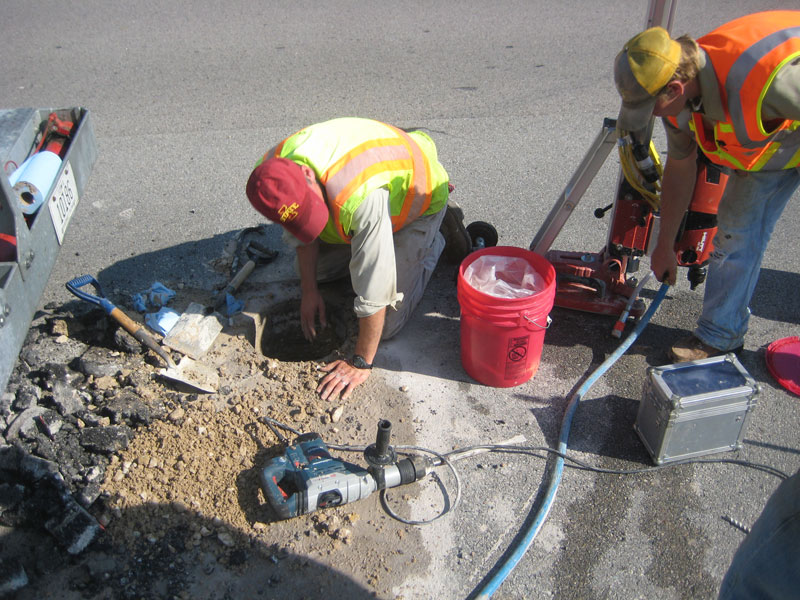
Researchers
David White
About the research
This field demonstration project, which was part of the SHRP 2 R02 project, Geotechnical Solutions for Soil Improvement, Rapid Embankment Construction, and Stabilization of the Pavement Working Platform, was conducted on the SR9B construction project in Jacksonville, Florida from May 16 to May 19, 2011. A Caterpillar CS74 vibratory smooth drum self-propelled roller weighing about 34,000 pounds was used on the project. The machine was setup with a roller-integrated compaction monitoring (RICM) system. Four test beds (TBs) were constructed and tested using the on-site poorly-graded sand embankment fill (A-3 according to the AASHTO classification system).
TB1 involved constructing six test sections incorporating several different geosynthetic reinforcement materials: biaxial geogrid (BX), geogrid/nonwoven geotextile geocomposite (C30), polypropylene woven fabric (PPWF), and 100 mm or 150 mm geocell (GC) materials, and one control section. TB2 involved compacting a thick loose lift (about 1.2 m deep) in two sections–one with BX geogrid reinforcement and one without reinforcement. TBs 3 and 4 involved mapping project production areas using the RICM roller and selecting test locations based on the color-coded on-board computer display in the roller for in situ testing.
The main objectives of this demonstration project were as follows:
- Evaluate the use of RICM technology with on-board computer display for compacted fill quality control (QC) and quality assurance (QA) testing
- Evaluate compaction influence depth under the RICM roller
- Evaluate differences in engineering properties between different types of geosynthetic and geocell reinforced fill test sections along with unreinforced fill test section using different QC/QA testing methods
- Evaluate differences in the in-ground dynamic stresses under the roller between different test sections
- Provide hands-on experience with RICM technology and various QC/QA testing technologies, and various geosynthetic/geocell reinforcement products to researchers and practitioners

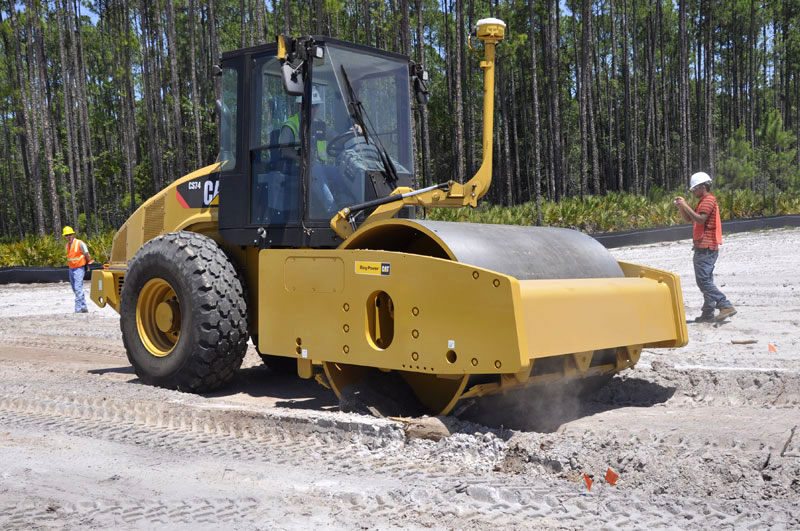
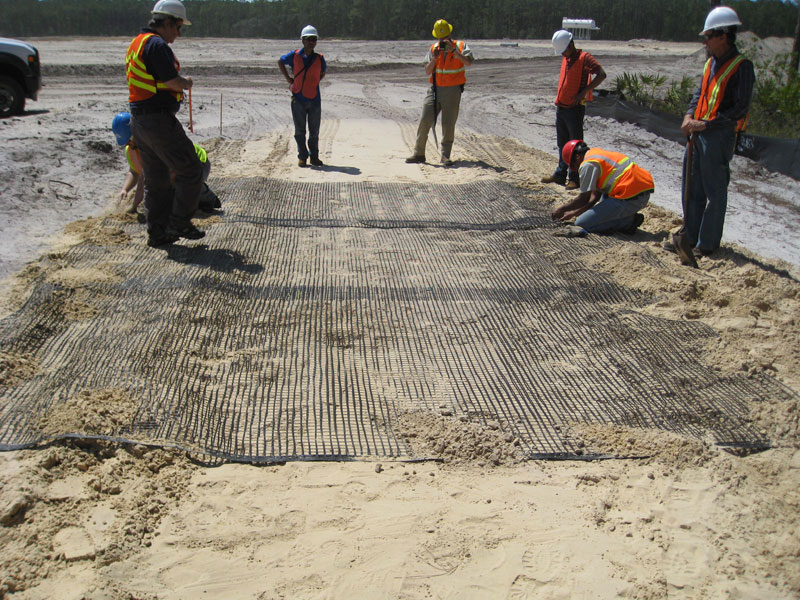
Researchers
About the research
These projects investigated four different potential methods for analyzing the SHRP 2 Naturalistic Driving Study by using data from similar field studies to examine road departure and intersection safety issues. In particular, the four projects examined the statistical relationship between surrogate measures of collisions (conflicts, critical incidents, near collisions, or roadside encroachment) and actual collisions.
